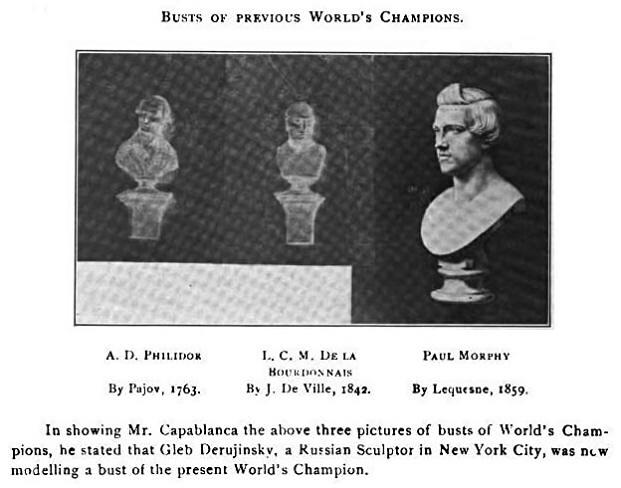
Edward Winter
(2012, with updates)
In C.N. 6583 Christian Sánchez (Rosario, Argentina) provided the following from pages 156-157 of the April 1922 issue of “Our Folder” (The Good Companion):

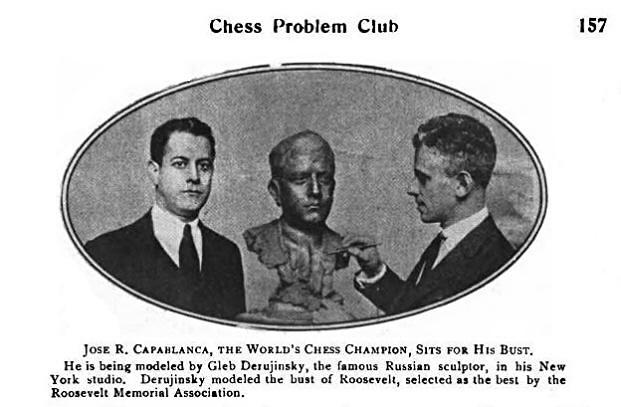
The Capablanca bust was also discussed in C.N.s 7803 and 9906. Another one is at the Capablanca Club in Havana, and below is a small photograph taken by us in 1986:
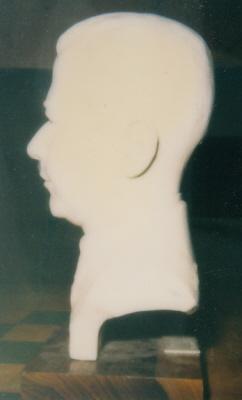
As regards Labourdonnais, C.N. 5149 gave an extract from Worlds of Chess Champions, a booklet issued by the Cleveland Public Library in October 2003:
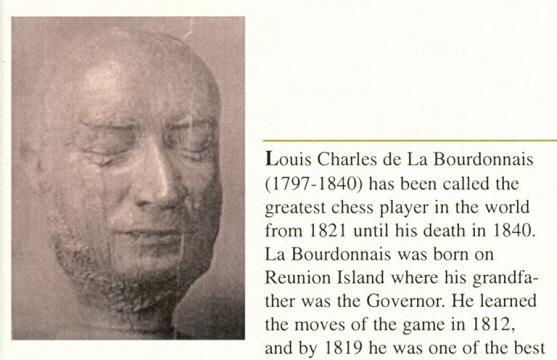
For corrected biographical information, see Louis Charles Mahé de Labourdonnais.
C.N. 3397 (see page 287 of Chess Facts and Fables) quoted the following passage about Labourdonnais by Sam Loyd on page 1884 of the Scientific American Supplement, 6 April 1878:
‘It is not generally known that a plaster cast was taken from his features at the time of his death and was brought to this country, and is at present in the possession of Mr Eugene B. Cook, the distinguished problemist, who prizes it most highly and takes peculiar pride in showing the stray locks of hair and whiskers that still adhere to the plaster.’
C.N. 5176 added that at the start of its 1842 run, in a note entitled ‘Portrait’, Le Palamède stated that no picture of Labourdonnais had existed and that when the master died Deville took a plaster cast of his head. Marlet then undertook a portrait of Labourdonnais:
‘Il n’existe aucun portrait de Labourdonnais. A sa mort, M. Deville moula sa tête. C’est sur ce plâtre et les souvenirs qu’il en conservait que M. Marlet a osé entreprendre de remplir cette lacune. Nos lecteurs jugeront la ressemblance et sauront apprécier toutes les difficultés qu’un artiste de mérite a eu à surmonter pour faire revivre les traits de Labourdonnais.’
Pages 145-147 of the 15 March 1842 issue of Le Palamède carried an article ‘Phrénologie’ which discussed the characteristics of Labourdonnais’ brain. The opening paragraph reported that copies of the bust were to be found in London chess clubs and other haunts and that the master had been subjected to phrenological scrutiny:
‘Le buste de Labourdonnais que nous possédons dans notre Cercle des Echecs et qui se trouve à Londres dans la plupart des clubs et divans où se jouent les échecs, a été moulé sur lui après sa mort, par M. Deville. La tête, dont le travail est des plus soignés, fut soumise à l’examen de la société phrénologique de Londres. Le docteur Elliotson se chargea de présenter son rapport sur cette intéressante communication ...’
Next, Paul Morphy:
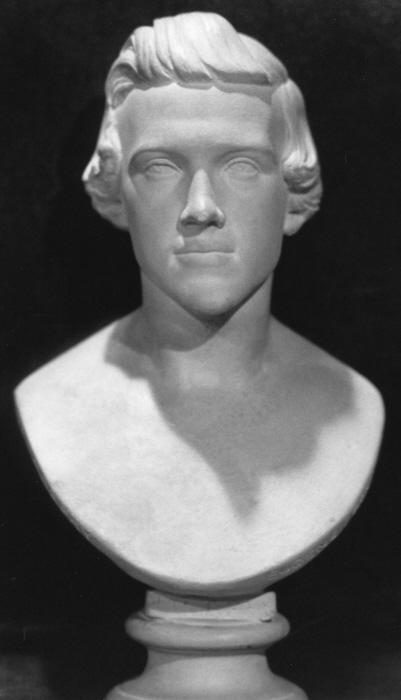
Of all the busts of chess masters, the best-known is doubtless Lequesne’s depiction of Morphy. The photograph above is reproduced here with the permission of David DeLucia (Darien, CT, USA) from page 202 of his book A Few Old Friends (Darien, 2003), which states:
‘Plaster bust of Paul Morphy by Eugène Lequesne, who was one of Morphy’s opponents at the Régence blindfold exhibition in Paris and asked Morphy to sit for this bust, which he did on 15 September 1858. The original, executed in marble, was exhibited at the Exposition des Arts in 1859. The small plaster replicas, approximately 12 inches tall, were probably executed in London by W. Lay in 1858. Charles Maurian, Morphy’s friend, noted in the New Orleans Delta on 6 February 1859 that the replicas arrived in New Orleans in January 1859.’
Much information about the busts of Philidor and Morphy is available on the Internet. Regarding the latter, see, for instance, the page on Lequesne at the Héritage des échecs français website.
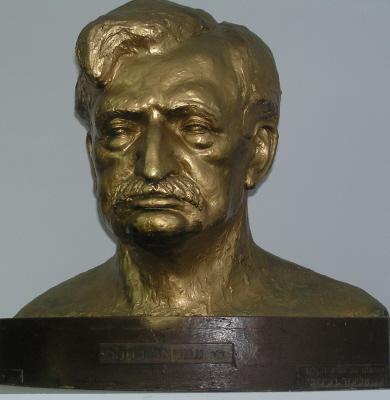
The above photograph of Emanuel Lasker was provided in C.N. 5035 by Avital Pilpel (Haifa, Israel), who wrote:
‘This bust of Emanuel Lasker has been in the Lasker Chess Club in Tel Aviv for the past 50 years or so. The three plaques on the base read (from left to right): “P. (or F.) N. Weber” (presumably the sculptor);“Dr Emanuel Lasker”; “Gift from the Club’s President, Mr Eliezer Rabinowitz”.’
C.N. 5052 added the following item from page 137 of the June 1944 BCM:
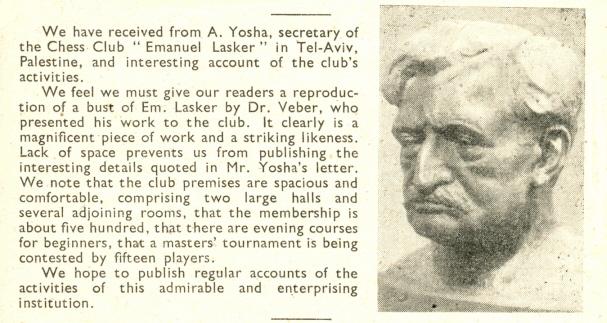
Our article Graves of Chess Masters, which includes the following passage about Alekhine from a report by ‘J.A.S.’ (Jakob Adolf Seitz) on page 220 of CHESS, 28 April 1956:
‘In memory of the tenth anniversary of the death of the late world champion Alexander Alekhine, several hundred people – more than one would have expected on an icy cold day – gathered outside the main entrance to Paris’s famous Montparnasse cemetery, just before eleven in the morning of 25 March 1956.
Folke Rogard, President of the International Chess Federation, was one of the first to arrive. Soon there came a strong delegation from the USSR led by grandmaster Ragozin. Some unkind tongues suggested that the Russian chessplayers were the main attraction of the ceremony to many locals; and certainly Smyslov, Keres, Bronstein, Geller, Petrosian and others were energetically pestered for autographs.
At 11 a.m., which was said to have been the hour of Alekhine’s death, the crowd moved to the monument.
We found that Abraham Baratz, a gifted sculptor, many times chess champion of Paris in his younger days, had chiselled a statue of Alekhine in his youth sitting at a chess board. All in white marble; and it was to be noted that his chessmen were not Staunton, but French, in type.’
As regards Max Euwe, C.N. 4116 noted, courtesy of Johan Hut (Baarn, the Netherlands) and Pascal Losekoot (Soest, the Netherlands), that on 7 May 2004 a statue was unveiled on the Max Euweplein in Amsterdam, near the Leidseplein. It was a bronze bust of Euwe, 65 centimetres high, and was created by José Fijnaut of Geverik (Limburg). The unveiling ceremony was performed by a city councillor, Euwe’s daughters and his grand-daughter, Esmé Lammers. (C.N. 3276 mentioned that she is the writer/director of the chess story Lang leve de koningin.)
In C.N. 4121 Calle Erlandsson (Lund, Sweden) contributed four photographs of the Euwe memorial which were taken by him on 27 November 2004:
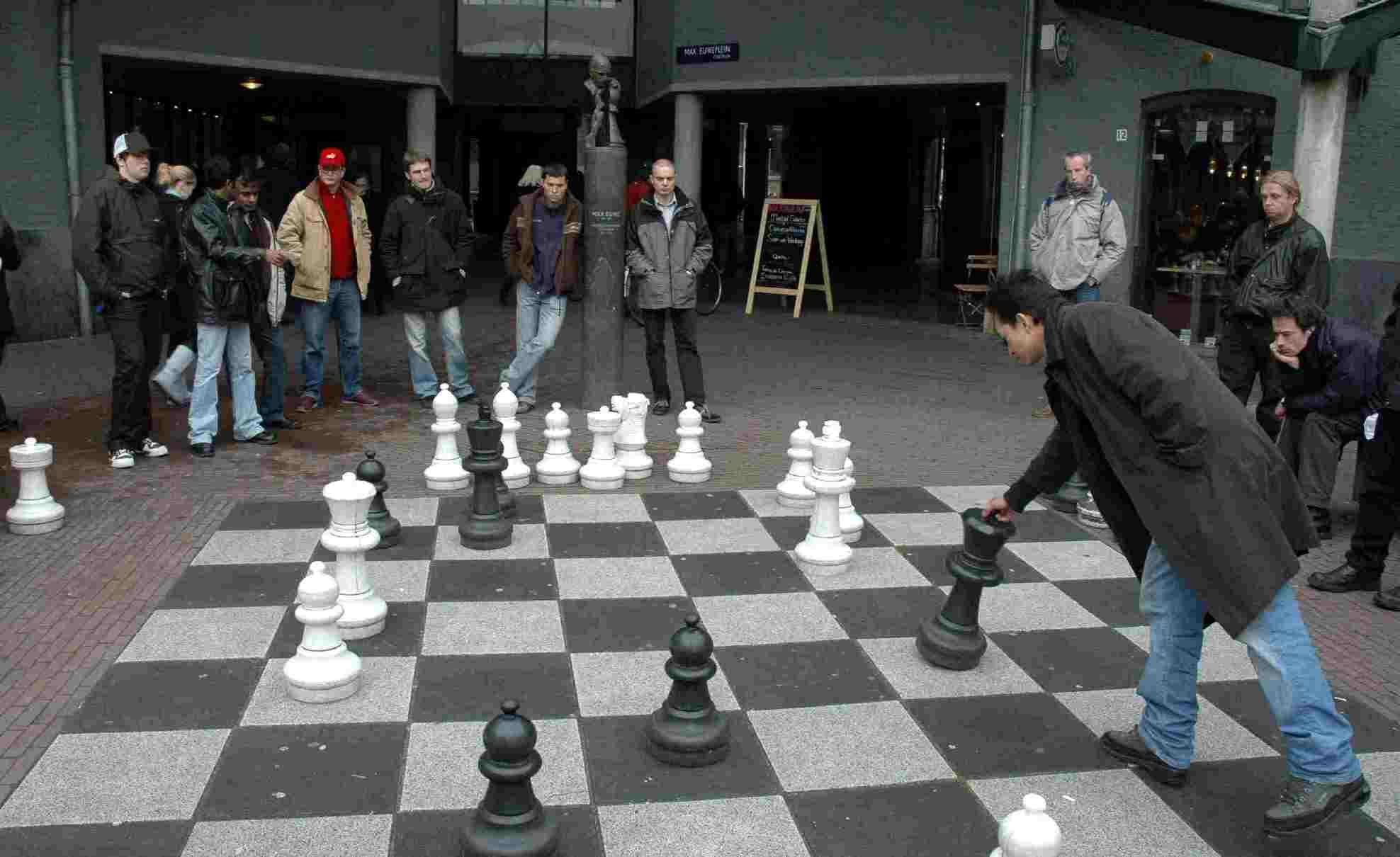
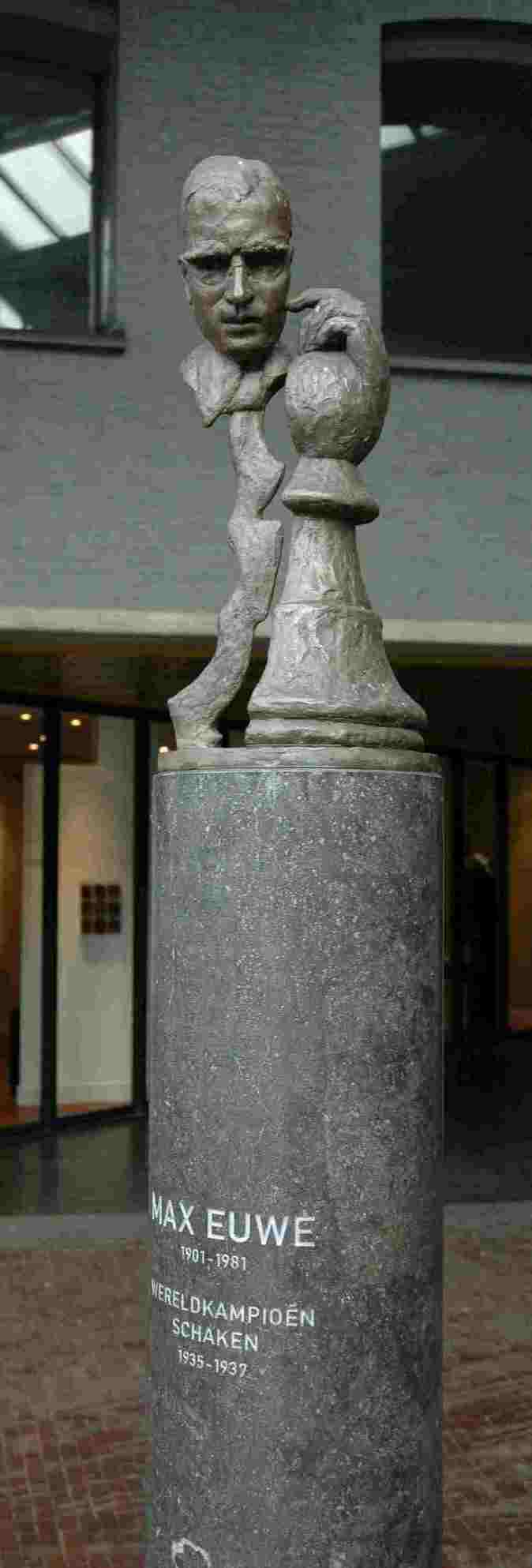
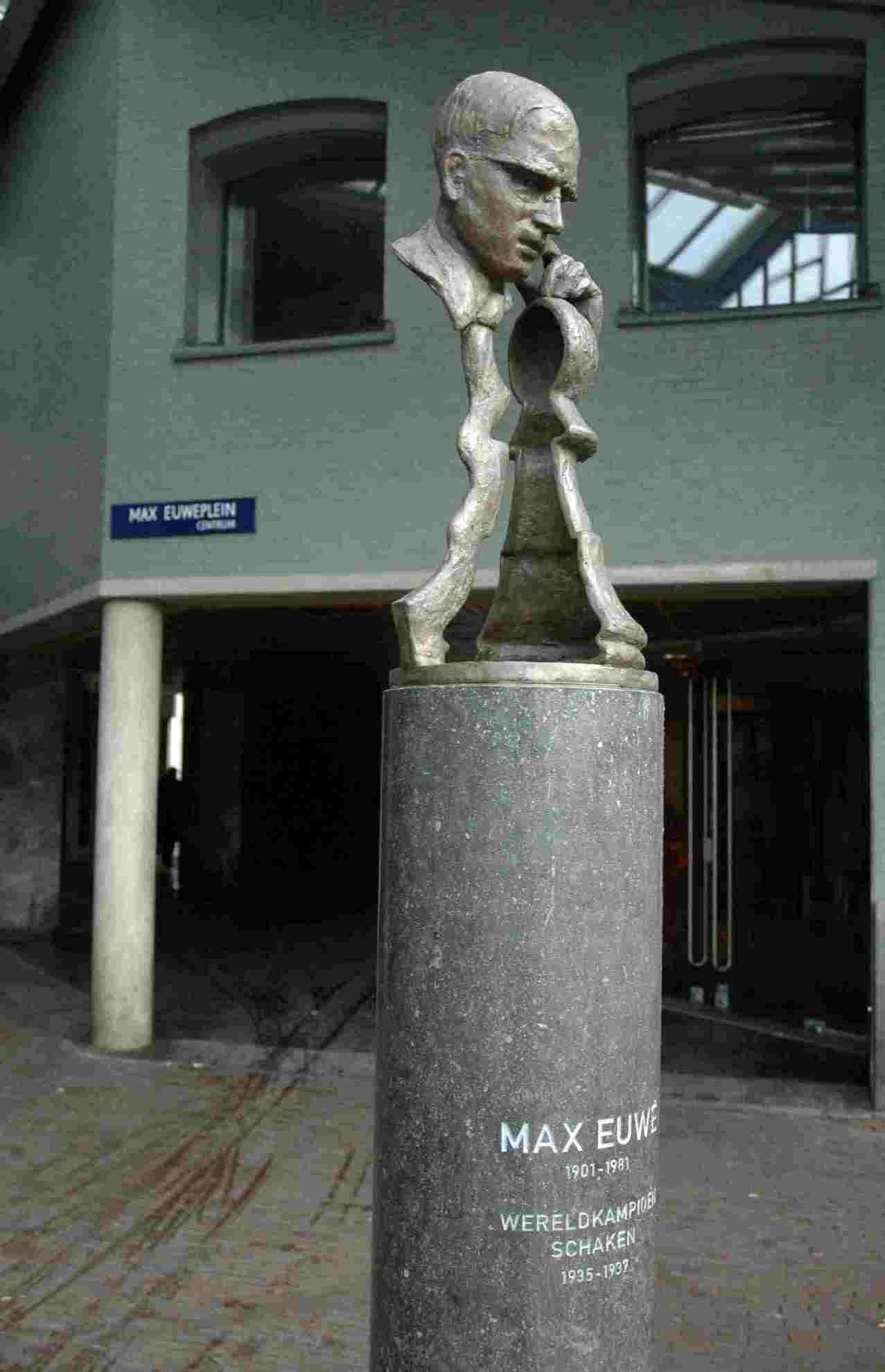
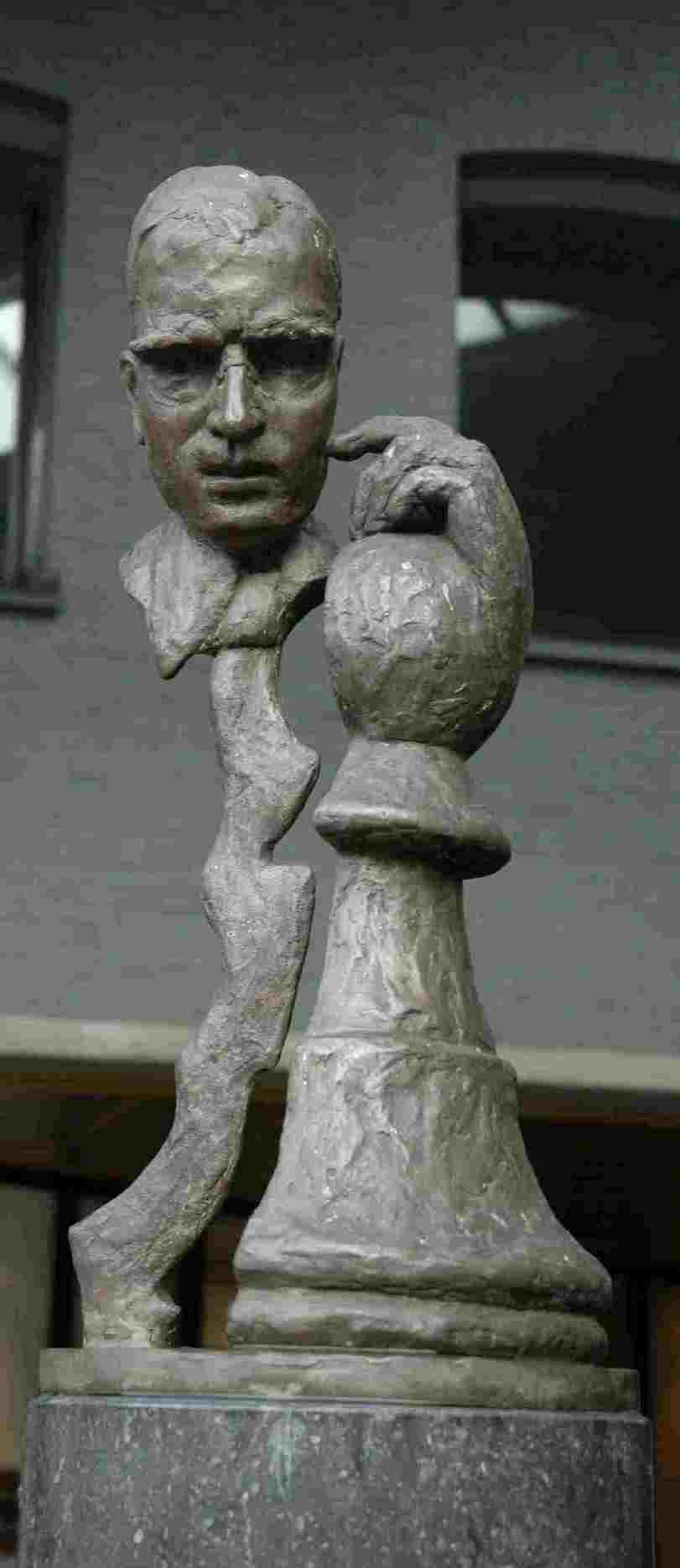
There exists a miniature version (approximately 20 centimetres in height), and we are grateful to Yasser Seirawan (Amsterdam) for a photograph of the copy which he possesses:
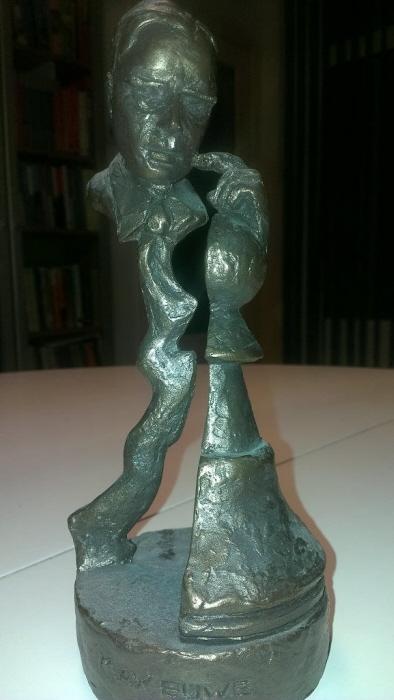
In C.N. 5230 Fabio Molin (Rome) submitted a photograph which he took at the Keres Museum in Tallinn at the end of September 2007:
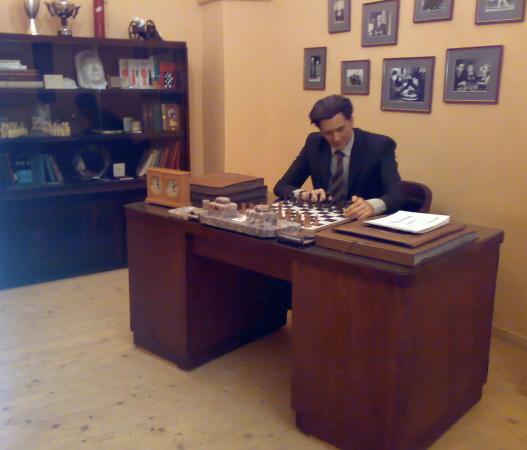
Another shot, from Calle Erlandsson, was given in C.N. 5732:
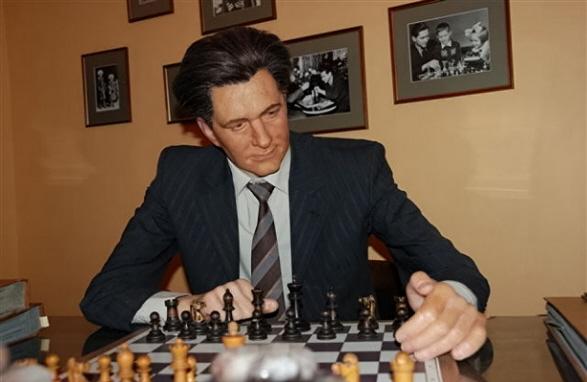
The above article originally appeared in 2012 at ChessBase.com.
Since the time our ChessBase article was written, a memorial to Keres (the Paul Kerese mälestusmärk) has been created in his native city, Narva, Estonia.
Michael McDowell (Westcliff-on-sea, England) informs us that two years ago he was asked by the sculptor David Goode of Oxford for a chess position that might be used in a projected work. From the photographs below, kindly sent to us by Mr Goode, the challenge to readers is to identify the position which Michael McDowell provided.
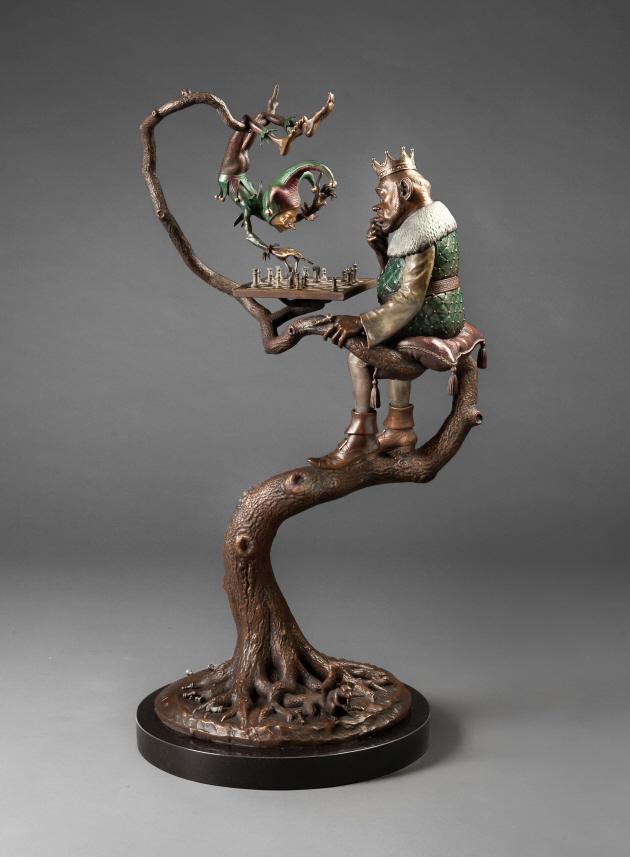
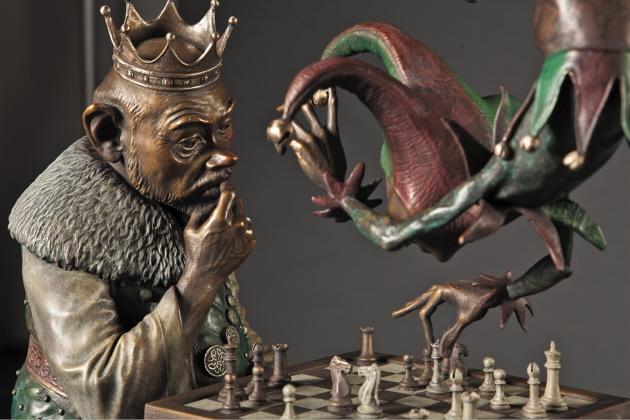
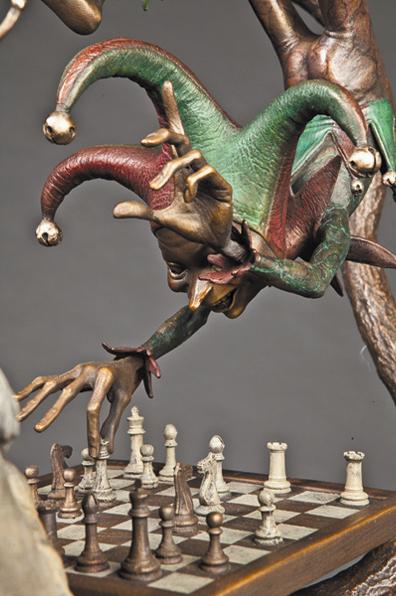
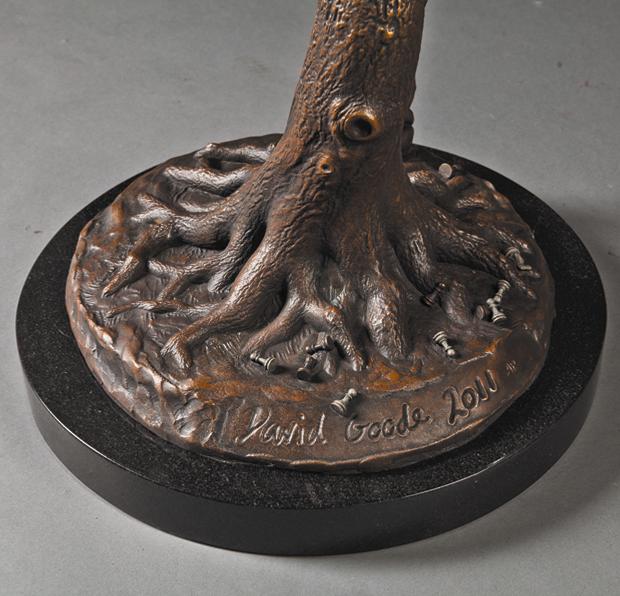
(7614)
The position provided by Michael McDowell for David Goode’s sculpture was the composition by Stamma on page 269 of Praktische Sammlung bester und höchst interessanter Schachspiel-Probleme by A. Alexandre (Leipzig, 1846):
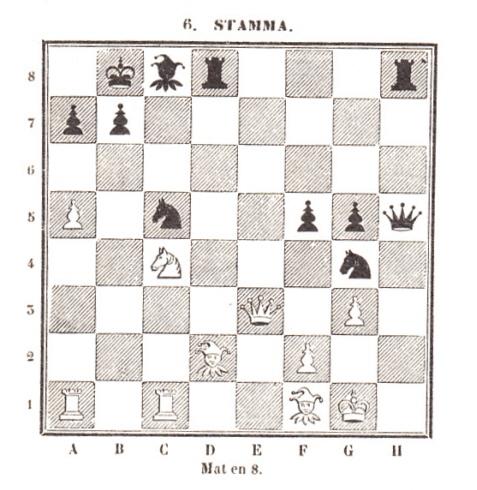
(7636)
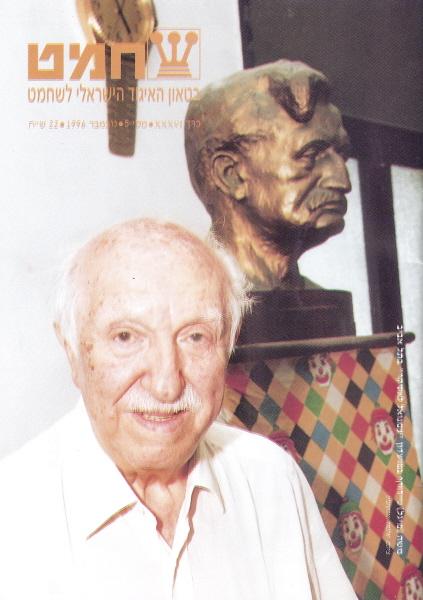
Regarding the Lasker bust, Martin Weissenberg (Savyon, Israel) forwards the front cover of the November 1996 issue of the Israeli magazine Shakhmat and comments:
‘It features Najdorf standing next to the bust of Emanuel Lasker at the Lasker Chess Club in Tel Aviv, and was taken by Shlomo Volkowitz during Najdorf’s last visit to Israel, in Autumn 1996.’
(8372)
To the Chess Notes main page.
To the Archives for other feature articles.
Copyright: Edward Winter. All rights reserved.